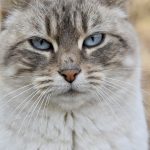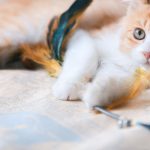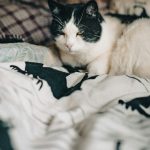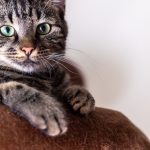Table of Contents
I’ve always had a soft spot for cats, especially when they need a little extra care. When my furry friend started looking a bit too skinny, I knew I had to find out how to fatten up a cat. It’s not just about giving them more food; it’s about understanding their unique needs and ensuring they get the right nutrition. Now, I’m excited to share these essential tips with other cat parents who want to help their felines reach a healthier weight.
First things first, I looked into why my cat was losing weight. After a thorough visit to the vet, we ruled out any medical and environmental factors. With a clean bill of health, it was time to focus on her diet and environment to get her to a healthier weight. It turns out that fattening up a cat the healthy way requires patience, love, and knowledge, which I’m eager to pass on.
Understanding Your Cat’s Weight Needs
As a cat mom, I believe in providing the best care for my kitties, and part of that care is maintaining their ideal body weight. Noticing your cat losing weight can be worrisome. It’s crucial to consult with a vet to get an accurate assessment of your cat’s body fat and overall health. Vets often use a body condition score, and Royal Canin’s insights helped me understand that the goal is to keep cats at a score of four to five out of nine. Keeping an eye on their weight is an ongoing task, but it’s rewarding to see them thrive.
Identifying If Your Cat Is Underweight
When my skinny cat showed signs of trouble gaining weight, I took steps to confirm whether she was indeed underweight. Inspecting her body condition was key; feeling her ribs, checking her waist, and looking for any signs of malnourishment. It’s not just about seeing a skinny cat; it’s about noticing whether the cat is underweight and needs intervention. Her health and happiness are my top priorities, so identifying the issue was the first step towards improvement.
My commitment meant that I had to keep an eye out for any changes in her behavior like if she stopped eating or showed signs of distress. Understanding the various reasons cats lose weight was crucial to helping my kitty on her journey to gaining weight. I ensured she was getting the right nutrition and care to encourage a healthy weight gain.
The Ideal Weight Range for Cats
Learning about the ideal weight range for cats was an essential part of my journey as a cat parent. Rapid weight loss in a cat, especially if it’s sudden, can be alarming. It could indicate various health issues like kidney disease or inflammatory bowel disease. When my cat’s weight started to drop quickly, I learned that this could be a sign of a serious problem that needed immediate attention. It’s important for all cat owners to be aware of their cat’s normal body weight and to watch for any signs of rapid weight loss.
Additionally, other health concerns like intestinal parasites can contribute to weight issues. It’s essential to understand that a healthy weight for a cat varies depending on their size, breed, and age. Regular check-ups with the vet helped me keep track of my cat’s weight and ensure she remained within the ideal range. Monitoring her weight became a routine part of our life together.
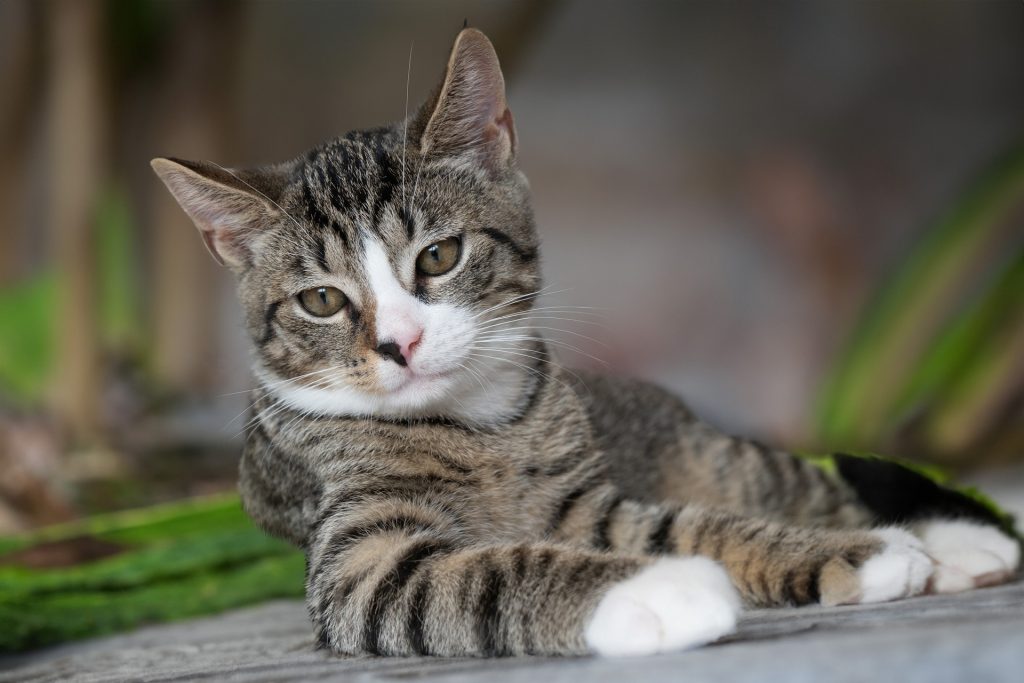
Nutritional Strategies to Help Your Cat Gain Weight
Developing a nutritional strategy to help my cat reach her ideal weight involved a lot of research and discussion with my veterinarian. We focused on her diet, adding high-calorie foods and ensuring that she was getting the right balance of nutrients. It was a delicate balance of increasing her body weight without compromising her overall health. I also learned the importance of monitoring how much my cat is eating and adjusting her diet accordingly.
High-Calorie Foods and Supplements
High-calorie foods and supplements became my go-to when I needed to help my cat gain weight. I incorporated more wet food into her diet since it’s typically more appealing to cats and can be higher in calories than dry food. I made sure to choose products rich in protein and healthy fats, which are essential for putting weight on a cat without compromising their health.
Finding the right balance between dry food and wet food was key. While dry food is convenient and can be left out for free feeding, it often doesn’t have the same appeal or caloric density as wet food. I had to ensure my cat was getting enough calories to gain weight while still maintaining a balanced diet.
Analyzing Ingredients: What to Include and What to Skip
As a cat owner, analyzing the ingredients in my kitty’s food became second nature. I aimed to include natural, whole foods that would not only help my kitty gain weight but also support her overall health. Carefully selecting the right food involved understanding which ingredients to include and which to skip. For instance, I learned that some cats can be lactose intolerant, so dairy wasn’t the best choice for fattening her up.
Monitoring the portions I gave her was also important, especially when introducing new foods into her diet. I always started with small amounts to minimize the risk of digestive issues. Keeping an eye on her food bowl ensured I was providing the right amount of food to support her weight gain journey.
The Role of Wet Food and Kitten Formulas
When it came to fattening up my cat, wet food played a significant role. Its higher protein content and lower carbohydrate levels made it an excellent choice for her diet. Especially when she was less interested in eating, the wet food enticed her much more than dry food. It was also important for me to ensure she stayed hydrated, as wet food has more moisture content than dry food.
Addressing Underlying Health Issues
It became clear that addressing any underlying health issues was crucial for my cat’s weight gain. When she was a skinny cat, I had to ensure her digestive system was functioning correctly and that no underlying diseases were contributing to her low weight. Through regular check-ups and monitoring, I worked alongside my vet to identify and treat any health concerns that could affect her ability to maintain a healthy weight.
Common Medical Conditions Affecting Weight
As I navigated the challenges of my cat being underweight, I learned about common medical conditions that could affect her weight. Underlying diseases such as hyperthyroidism or diabetes could be culprits, and it was vital to get a proper diagnosis. A thorough veterinary examination helped us identify any health issues and put us on the path to addressing them.
Once we ruled out any underlying disease, we could focus on a nutritional plan to help her gain the necessary weight. It was a relief to know that with the right care and attention, we could tackle the issue head-on and help her achieve a healthy weight.
Importance of Veterinary Consultation and Diagnosis
Seeking a veterinarian’s consultation and getting a proper diagnosis was a critical step in helping my cat gain weight. Their expertise guided me in understanding my cat’s specific needs and determining the best course of action. I learned that a personalized approach to her health and diet was necessary for successful weight gain.
It was comforting to have professional support as I embarked on this journey with my cat. Regular veterinary visits helped us monitor her progress and ensure we were on the right track. With their help, I could create a tailored plan that addressed her unique health requirements.
Treatment Plans to Resolve Weight-Affecting Health Issues
Tackling my cat’s underlying health issues was essential for her to start gaining weight. Once the vet and I established a treatment plan, we could concentrate on her diet and nutrition. It was about more than just calories; it was about providing the right nutrients to support her overall health while addressing the disease that had contributed to her weight loss.
With a clear treatment plan in place, I could focus on helping her regain the body mass she had lost. I kept a close eye on her weight and made sure her diet was tailored to her specific medical needs. It was a collaborative effort between my vet and me to ensure my cat’s weight gain was healthy and sustainable.
Creating a Positive Eating Environment
Creating a positive eating environment for my cat was just as important as the food I was giving her. I made sure her food bowl was placed in a quiet, stress-free area, away from loud appliances and far from the litter box. It was crucial to provide a space where she could eat comfortably and without any distractions or anxiety.
Encouraging Appetite Through Meal Presentation
Encouraging my cat’s appetite involved a thoughtful meal presentation. I switched to serving her regular meals in smaller portions throughout the day instead of a few large ones. This helped prevent any digestive discomfort and made it easier for her to consume enough calories to start putting on weight.
In addition to her main meals, I included cat treats like small pieces of cooked chicken breast as a way to entice her to eat more. The goal was to make mealtime appealing and satisfying, helping her to associate food with positive experiences. Watching her gradually gain weight was a testament to the love and care I put into her meal planning.
The Significance of Regular Feeding Schedules
As a cat mom, I’ve learned that sticking to a consistent feeding schedule is crucial for my feline friends. Just like some of us prefer to have meals at the same time every day, cats thrive on routine. Regular feeding times help regulate their metabolism and ensure they’re getting the right amount of nutrition throughout the day. Plus, smaller, more frequent meals can be beneficial, especially for older cats whose stomachs may not handle large portions as well.
Offering my cats their favorite food in smaller amounts more often has greatly aided in their weight gain journey. It ensures they’re getting enough calories without overwhelming their digestive system. So, I’m always mindful to serve meals at the same times each day to keep their little bodies well-fueled and functioning optimally.
Managing Stress and Environmental Factors
When my cats started ignoring their food, I turned detective to uncover the cause. It turns out, that environmental stressors can impact their appetite. For instance, placing the food bowl in a noisy area or too close to the litter box can discourage them from eating. I now make sure each cat has their bowl in a quiet, comfortable spot, far away from the litter box to maintain hygiene and a peaceful dining experience.
Additionally, I’ve observed that anxiety can lead to a loss of appetite, so I’ve created a stress-free environment at mealtime. Ensuring there’s no dominance play during meals is important, and sometimes that means feeding them separately. By addressing these factors, I’ve seen a positive change in their eating habits, contributing to a healthier weight gain process.
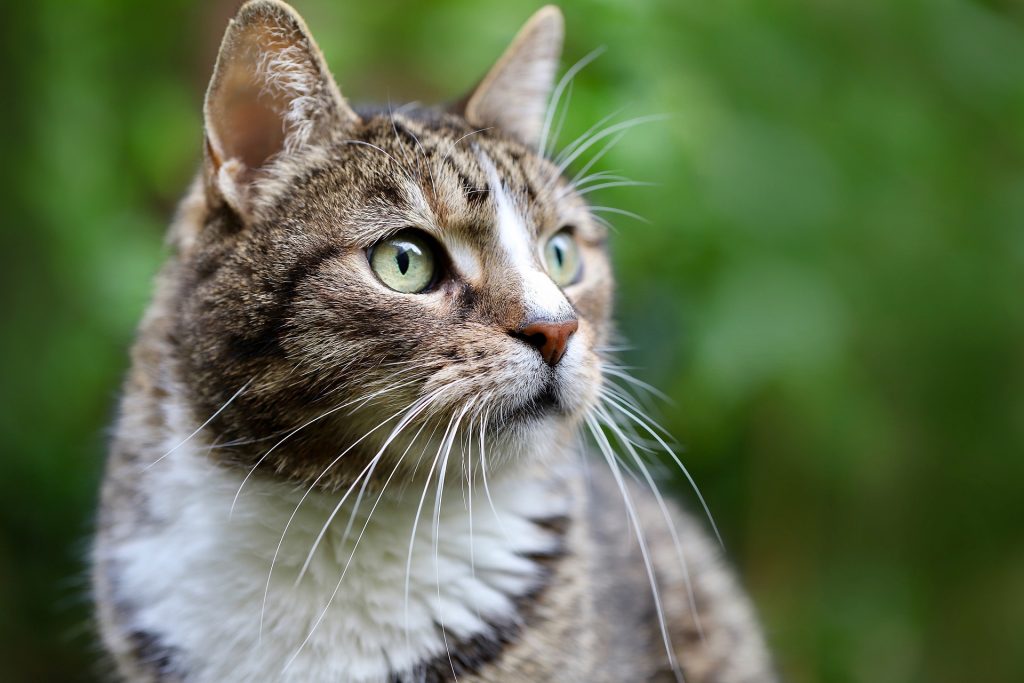
Exploring Cat Food Brands and Products
With so many options on the market, choosing the right cat food for weight gain can be daunting. Brands like Royal Canin and Hill’s offer highly digestible, calorie-dense formulas in their food for young kittens and canned cat food, which are excellent for helping healthy cats bulk up. I make sure to pick products that meet the specific nutritional needs my cat needs to gain weight and keep an eye out for those available at pet food stores.
Top Picks for High-Calorie Cat Foods
When searching for high-calorie options, I’ve found that wet food often has the protein and flavor that cats love, which supports their weight gain goals. This type of food also tends to be lower in carbohydrates than dry food, aligning better with their natural diet. Smalls Fresh Cat Food is one of my top picks, especially with their enticing discounts that make it a fantastic deal for my feline companions.
Another favorite of mine is the nutrient-rich picks from brands that specialize in high-calorie formulas. These foods are crafted to meet the caloric needs of cats striving to reach a healthier weight, and my cats seem to love the taste, too. It’s a win-win for their taste buds and their health.
Understanding Cat Food Labels and Nutritional Information
As cats are obligate carnivores, it’s essential to choose foods that provide the essential nutrients they require. I always scrutinize cat food labels to ensure the protein, fat, and carbohydrate content aligns with their needs. Typically, wet food has fewer carbs and more moisture, which is great for their diet.
The breakdown of macronutrients in natural prey is vastly different from what’s found in many commercial cat foods. That’s why I pay close attention to the labels, looking for options that mimic the natural diet of cats while still providing the energy they need from carbohydrates, within reasonable limits.
Recommendations for Supplements and Treats
Supplementing my cat’s food with calorie-rich additives like fish oil has been a game-changer. Not only does it boost the calorie content, but it also provides essential fatty acids that contribute to their overall health. Plus, it’s a treat they adore, and it makes their coats glisten with health.
I’ve also explored other supplements, such as cottage cheese, which can be a good source of extra calories and calcium for my cats. It’s all about finding those little extras that can make a big difference in their diets without compromising their health.
The Healthy Way to Bulk Up Your Feline Friend
In my experience, the key to helping my cats gain weight healthily is to offer them smaller portions of their favorite foods more frequently. This approach ensures they’re getting the nutrients they need while allowing their bodies to properly process the meals. It’s a gentle and effective method that has worked wonders for my feline friends.
Gradual Increase in Food Intake
Encouraging my cat to eat more for weight gain doesn’t happen overnight. I’ve found that dividing their daily diet into smaller meals helps them adjust until I can gradually increase the amount each time. It’s important to be patient and attentive, increasing portions slowly to avoid any digestive issues.
Through this process, I’ve learned that it’s not just about quantity but also about the quality of the food they consume. It’s my responsibility to ensure that as their food intake increases, it’s done in a way that benefits their health and doesn’t lead to any discomfort or complications.
Including Exercise in Your Cat’s Routine
Even as my cats are bulking up, it’s vital to keep them active. Regular playtime isn’t just fun—it helps maintain muscle tone and prevents them from becoming overweight. I’ve incorporated various toys and activities that encourage them to move, jump, and chase, keeping their bodies fit as they gain the right kind of weight.
Exercise also stimulates their appetite, making them more inclined to eat their next meal. It’s a delicate balance, but ensuring they get enough physical activity is a crucial part of their weight gain journey and overall health.
Monitoring Progress and Making Necessary Adjustments
As my cats’ weight gain progresses, I keep a close eye on their development. Regular check-ins to monitor their weight and body condition help me determine if I need to make any diet adjustments. This ongoing vigilance ensures they’re gaining weight at a healthy pace without experiencing any setbacks.
Should I notice any changes that concern me, such as too rapid weight gain or signs of discomfort, I don’t hesitate to consult with my vet. Together, we make the necessary tweaks to their diet or routine to keep them on track for steady, healthy weight gain.
Holistic Care Beyond Just Food
Beyond the bowl, the health of my cats depends on a mix of physical care and emotional nurturing. Holistic care includes maintaining a diet that’s high in protein and low in carbs, but it’s just as important to support their overall lifestyle. This means ensuring they have plenty of water, playtime, companionship, and a comfortable environment. By addressing all aspects of their well-being, I’m confident that I’m providing my cats with the best care possible, contributing to their happiness and longevity.
The Impact of Companionship and Playtime
Companionship and playtime are as vital to my cats’ health as their diet. Engaging in daily play sessions not only keeps them active but also strengthens our bond. I find that interactive toys, like feather wands or laser pointers, captivate their attention and mimic the hunting experiences they instinctively crave. These activities help them maintain a healthy weight by stimulating their metabolism and building muscle tone.
Moreover, the social interaction from playtime contributes to their emotional well-being. Cats are often perceived as solitary creatures, but they do enjoy and benefit from the loving attention of their human companions. Consistent playtime and affection can reduce anxiety and stress in cats, leading to a more balanced appetite and preventing stress-related eating behaviors.
Ensuring Adequate Hydration
Water is a cornerstone of my cats’ health, especially when I’m focused on helping them healthily gain weight. Adequate hydration facilitates digestion and nutrient absorption, which is crucial for cats on a calorie-dense diet. To promote hydration, I always have fresh water available and encourage drinking by placing multiple water bowls around the house. Sometimes, I add a little water to their wet food to increase moisture intake.
Keeping an eye on their hydration levels is part of my daily routine. Cats can be finicky about drinking water, so I consider using water fountains to entice them with the appeal of running water. This not only helps in preventing dehydration but also supports kidney function and overall health. I know that when my cats are well-hydrated, they’re on the right track to achieving a healthy weight.
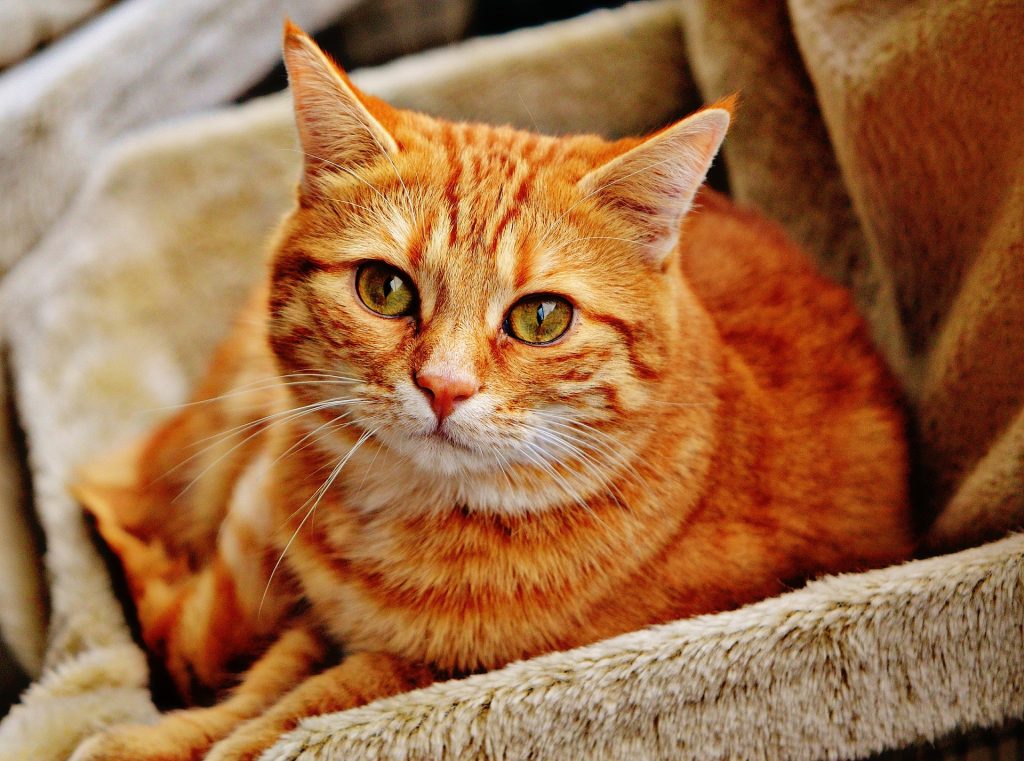
Key Takeaways on How to Fatten Up Your Cat
As a pet parent, understanding how to fatten up a cat is about more than just increasing their food portions. It’s a delicate balance to maintain their health and well-being while helping them reach a healthy feline weight. First and foremost, make sure your feline friend’s diet is rich in high-calorie, nutritious pet food. You can enhance their diet with tasty add-ons like cooked chicken, which is not only appealing but also gentle on their digestive tract. Keep in mind, though, that treats designed for dogs should not be given to cats, as their nutritional needs differ.
To help your cat gain weight naturally, it’s important to establish a consistent feeding schedule where cats eat at the same times each day. This provides them with a sense of security and routine, which can encourage better eating habits. However, as you work on fattening up your cat, be vigilant about the risk of feline obesity, which is just as concerning as being underweight. Regular check-ins with your vet will help you monitor your cat’s progress and adjust their diet as needed to ensure they maintain a healthy weight.

Hi, I’m Zoey, a devoted mom to two charming Siamese cats. My passion lies in assisting fellow pet owners in providing optimal care for their cats. On CatsEuphoria, I share practical tips and relatable stories, inviting you to join me in appreciating the authentic bond between humans and our beloved feline companions.

